Collect the first blossoms of the season and create a lovely spring lilac sugar. Lilac flowers will infuse your sugar jar with delicate floral notes. When garden and flower beds have not yet started to produce in abundance, there is something satisfying and hopeful in capturing the first offerings of spring. The finished sugar can be used in body scrubs, beverages and baking.
Gathering Lilac Blossoms
My lilac bush is a special one. I transplanted a shoot from my grandmother’s yard many years ago. She is aptly named “Irma,” and has remained strong in her current location and her place in my family history. The lilac shoot, or sucker, that I mentioned above is a natural way for a lilac to propagate and form colonies. Spring is a great time of year to dig out these shoots for replanting. They are a much faster way to start lilacs than from cuttings. I started Irma with a small shoot that I carried home on the front seat of my car. More than a decade later, she is robust and sending out shoots of her own. This year, she is heavy with foliage and light on blossoms; but she definitely has more than enough to offer up for lilac sugar.
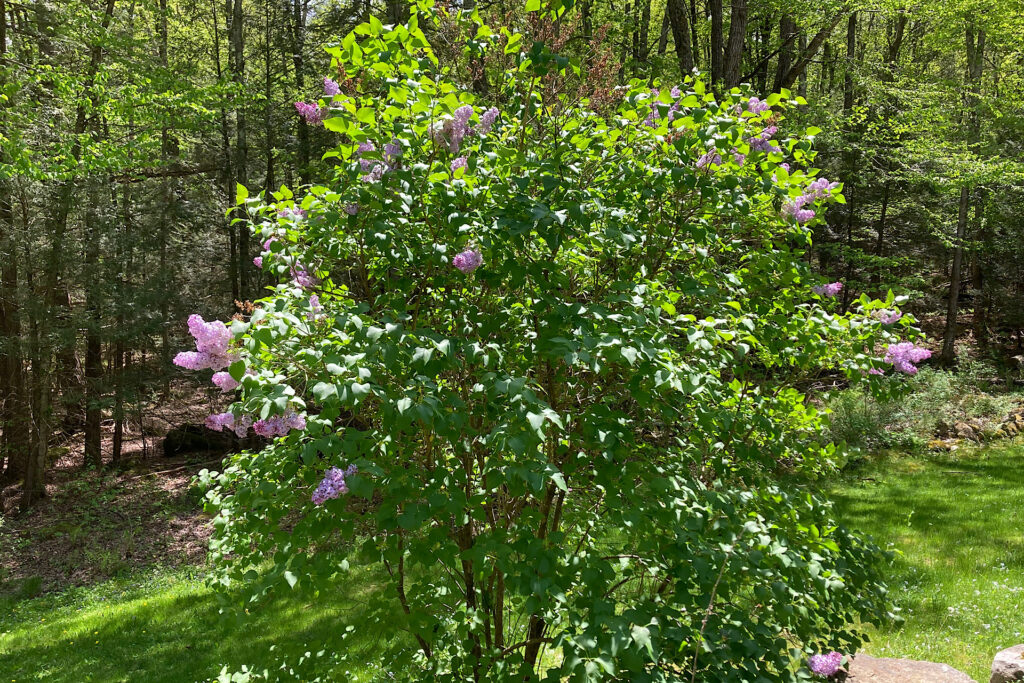
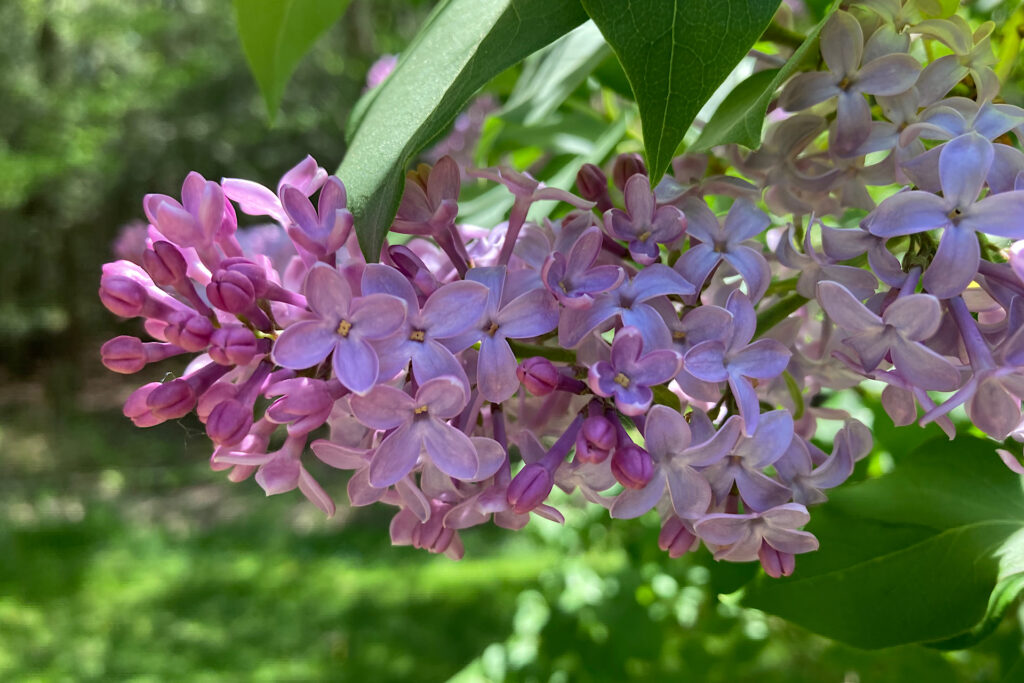
It requires approximately two large floral clusters to fill a half cup with lilac blossoms. This lilac sugar recipe uses a half cup of blossoms for each cup of sugar. Adjust accordingly depending on the amount you intend to make.
It’s important to note that you should only use blossoms from lilacs that have not been treated with pesticides or chemicals. Our Irma is free from contamination and her blossoms are safe to use. After cutting lilac blossoms, give them a good shake in case there are any insects clinging to the flowers. I don’t recommend rinsing blossoms as they need to be as dry as possible. You could rinse and spin your flowers in a salad spinner, but you will then have to leave them out to dry thoroughly before combining them with sugar.
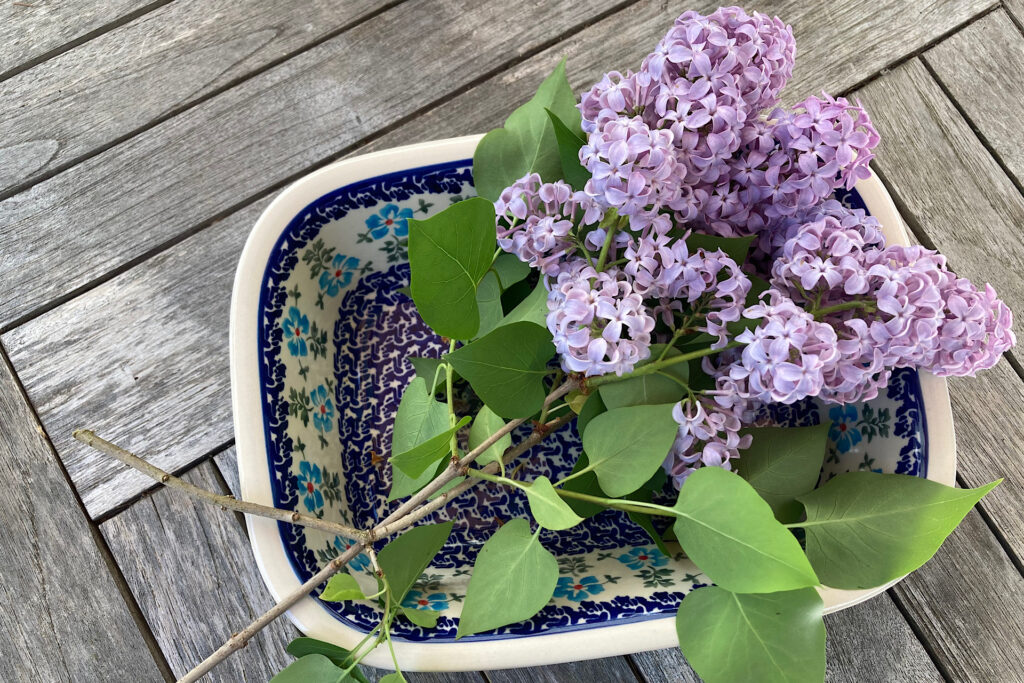
Preparing Blossoms for Spring Lilac Sugar
After clipping the cone-shaped lilac clusters from the bush, you will need to remove the individual blossoms from the clusters. You will not use the leaves, twigs, stems or any greenery. The tiny blossoms consist of four petals fused together where they meet in a long, tubular base. Inside the lilac blossoms, are bright, yellow anthers (pollen producers). If you grasp the little stems close to the blossoms, you can pull the tubular base out of the little green sepal it is anchored in. This will leave the yellow anthers and sepal and you will be left with the petals and tube for sugar making.
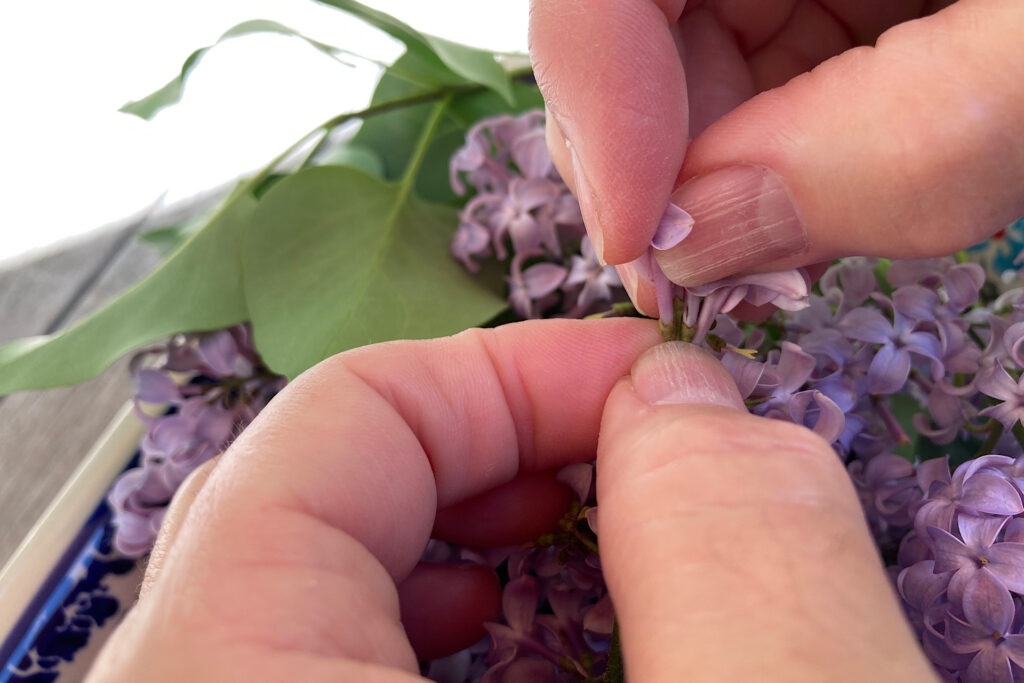
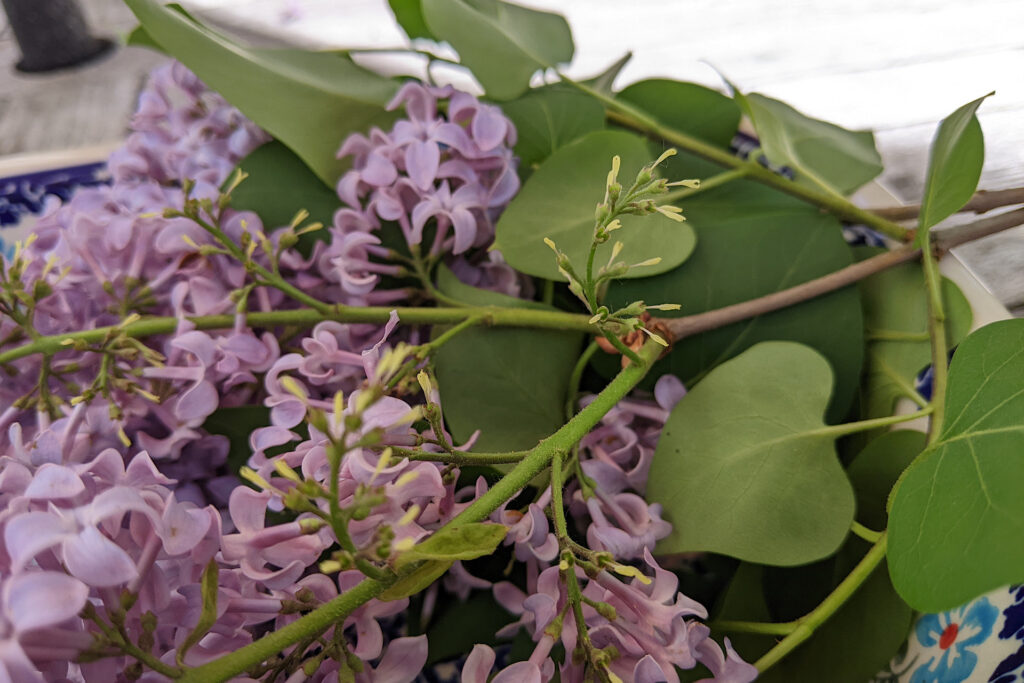
Pick a half cup of blossoms for each cup of spring lilac sugar you would like to make. I want this batch to yield three cups of sugar, so I need a cup and a half of blossoms. I plan to keep one cup of finished sugar and gift the other two cups. When removing blossoms, your fingers will become slightly sticky. The individual flowers are simple to remove, however, and it won’t take as long as you might imagine. I chose a sunny afternoon on the deck and found working the blossoms enjoyable and relaxing.
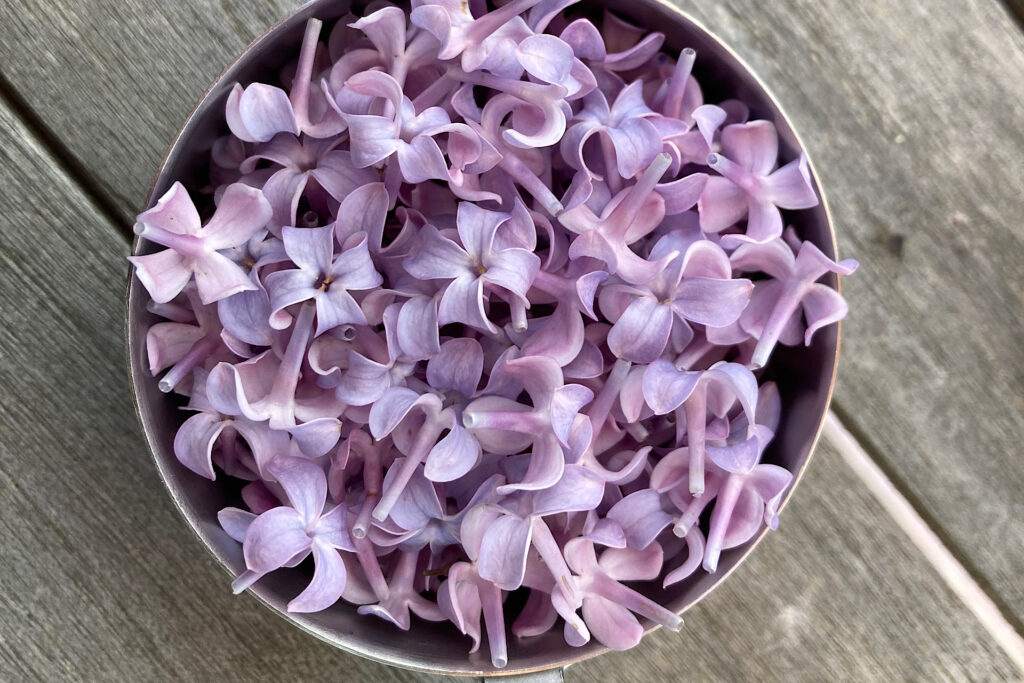
Making Spring Lilac Sugar
These are directions to make one cup of sugar infused with spring lilacs.
Supplies:
- 1 canning jar or jar with tight fitting lid
- ½ cup of lilac blossoms
- 1 cup of granulated sugar (I used organic cane sugar)
Mixture:
- Place a 1/4 cup of sugar into bottom of clean, empty jar
- Layer 1/8 cup of blossoms on top of sugar
- Repeat layers three more times until you have used 1 cup of sugar and ½ cup of lilac blossoms
If you would like to make a larger amount, just adjust your measurements accordingly and divide them into four equal layers.
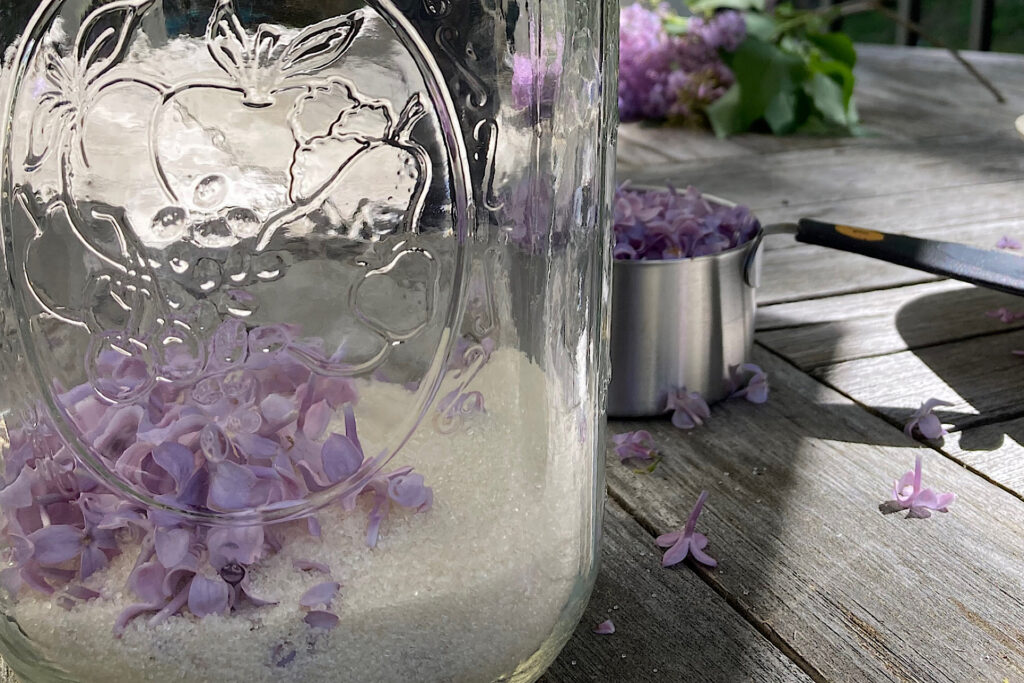
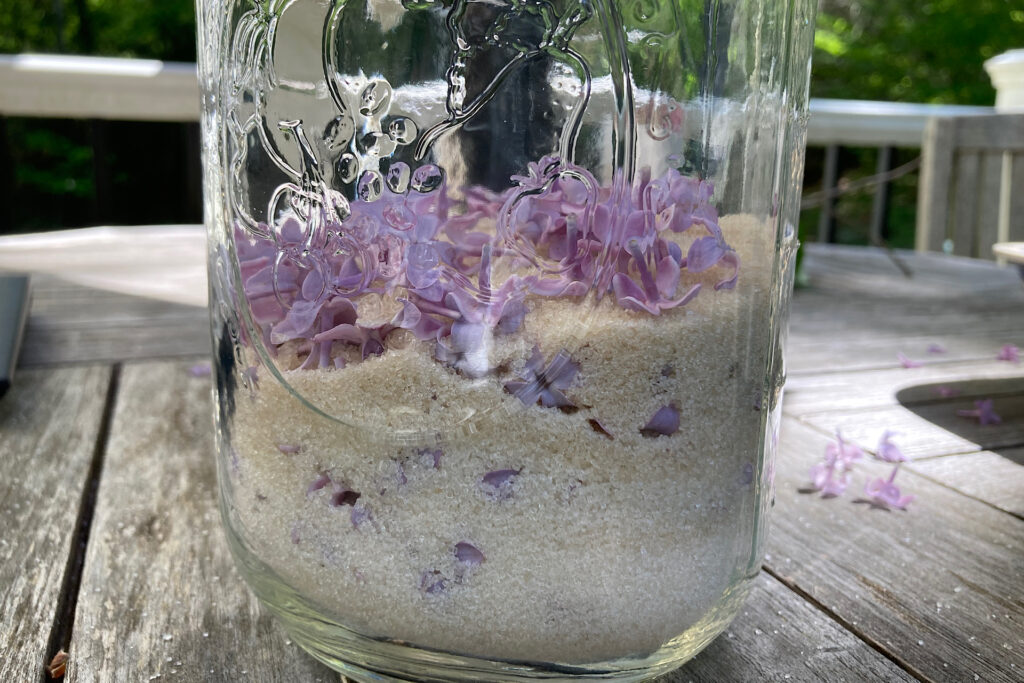
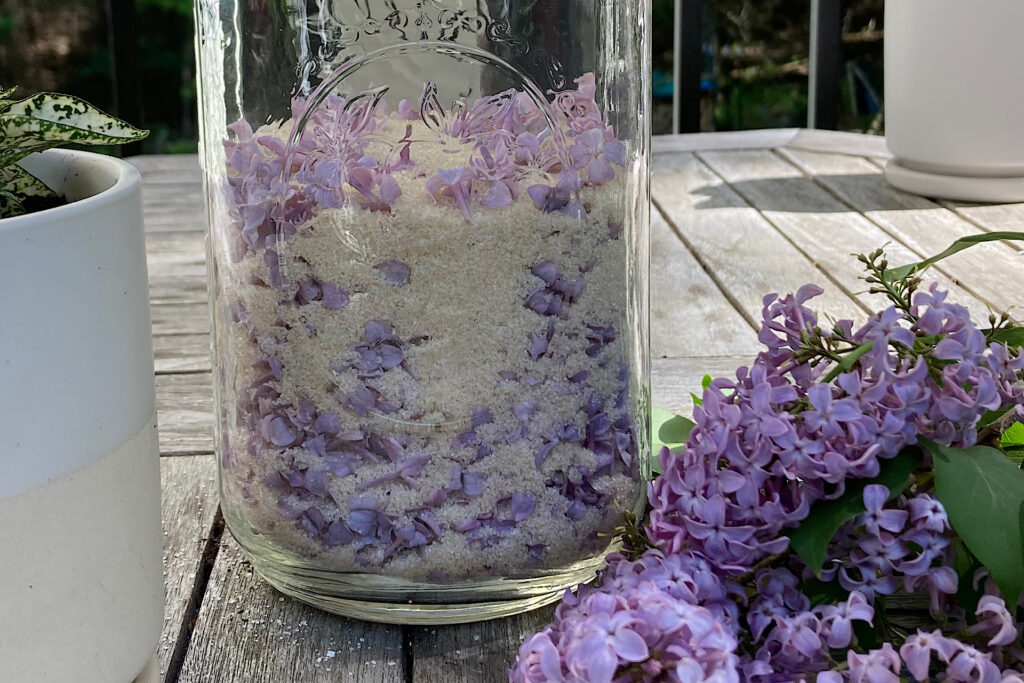
Shake the Container
After layers are complete, screw lid on securely and shake the contents to mix thoroughly. You will want to continue to shake the jar every couple of hours for the next 24 hours (this means of course, during waking hours). You will notice the appearance will change. The sugar will become clumpy and stuck together. This is from the moisture infused from the blossoms. The blossoms will flatten and appear darker as they become flattened and release their fragrance/taste into the sugar.

Storage
Some articles will suggest leaving lilac blossoms in the sugar jar indefinitely and some will suggest a few weeks. Others recommend removing the flowers after 24 hours to prevent the sugar from becoming off- or bitter-tasting. I prefer the latter advice as the sugar clumping indicates the flowers have already delicately infused the mixture. I’m also not a fan of letting moisture build up in any jar for very long.
After 24 hours, I empty the jar into a kitchen sieve separating the blossoms from the sugar. If the sugar is overly clumped up, I pulse it a few times in my food processor; then spread it on a clean baking sheet lined with parchment. I pop the baking sheet into a 200-degree oven for approximately 5 minutes to dry it evenly.
Once cooled and dry, I place the sugar in a clean jar with a secure lid and store. Spring lilac sugar can last up to a year in the pantry.
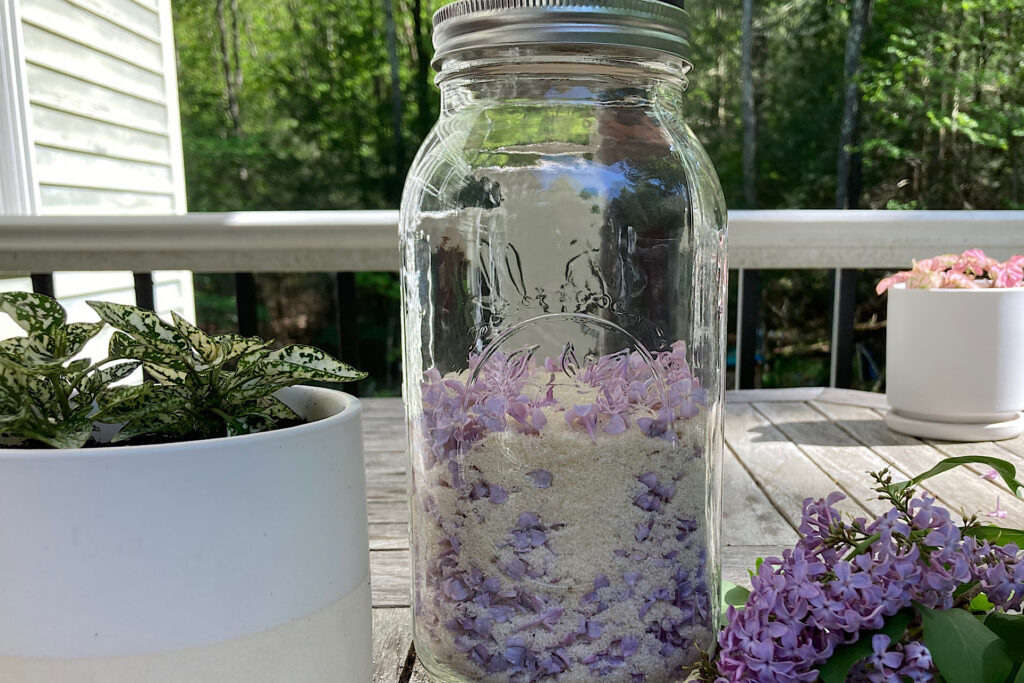
Uses for Spring Lilac Sugar
You can add spring lilac sugar to hot or iced coffee, teas or lemonade. Use it in cake frosting. Replace the sugar measurement in baking. Sprinkle on scones. Add to your granola cereal. Enhance fresh berries.
I’m going to use mine to make whipped cream for spring strawberry shortcake. What are your ideas?
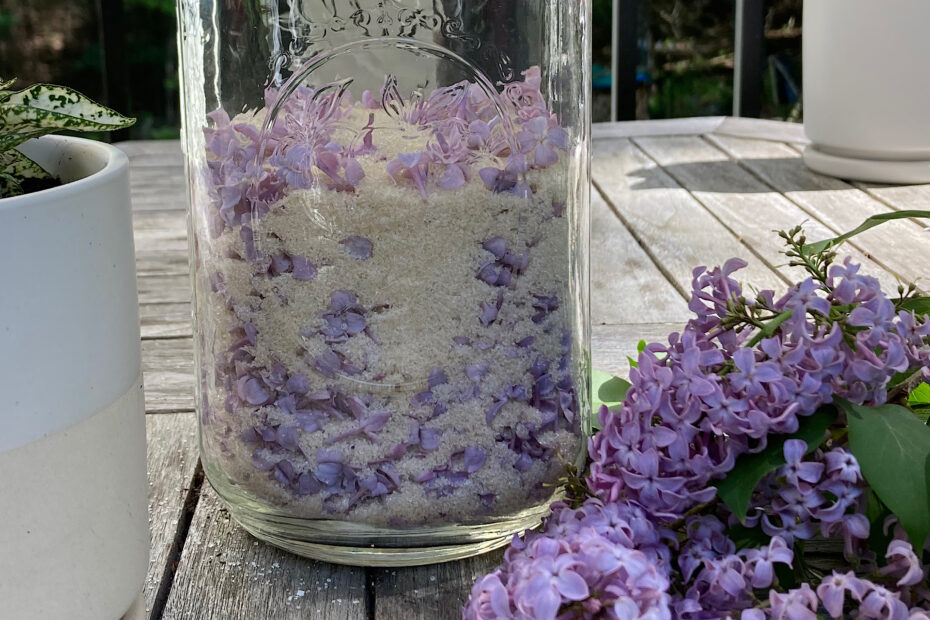
I am going to mix mine with coconut oil for a lavender balm!
Yes – mixed with coconut oil makes a lovely body scrub!